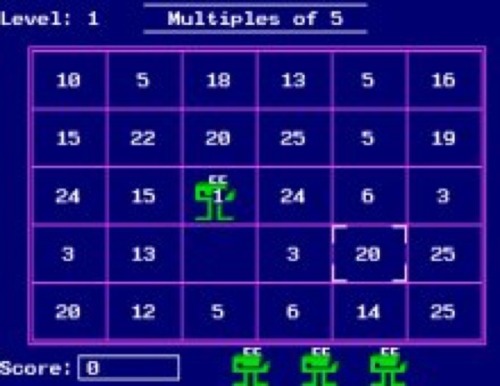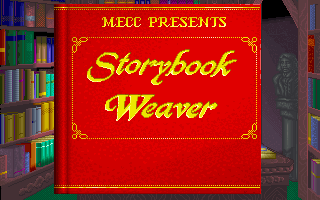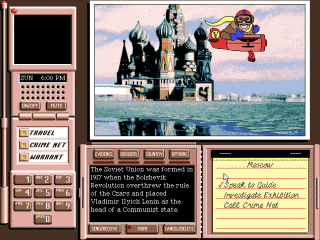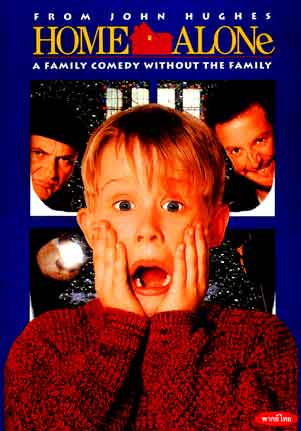
With the rapid rise in household personal computer ownership throughout the 80s and 90s, children faced an entirely new arena of play to conquer. While kids may have viewed computers as a new uncharted frontier of free play, our parents and teachers were somewhat the wiser in regulating our zeal. Computers, they realized, were a perfect tool for tricking kids into learning material that would only otherwise be absorbed against their will. This backhanded approach to learning may not have been a perfect system, but dammit we would learn our multiplication tables and enjoy it.
Computer game manufacturers released heaps of educational titles cleverly disguised as amusing games. Bright colors and flashy animations effectively distracted children from the realization that they were indeed learning, and in their spare time to boot. Sure, we had an inkling deep down that these games were more substantial than our usual trivial fare, but throw enough Troggles or buffalo hunting into the mix and we were putty in your education-molding hands.
Whether in old-school Macintosh computer labs at school or on our crappy primitive homebound PCs, we collectively spent countless hours playing educational computer games. Parents and educators were usually pretty adept at remaining tight-lipped over the educational nature of the game, leaving us to our delusions of frivolous game play. As far as adults were concerned, what we didn't know couldn't hurt us...and it may just help us pass a geography test along the way.
Oregon Trail

Oregon Trail was the classic 80s and 90s educational computer game. It was a pioneer (this pun may be too horrible even for me) in its field, teaching children everywhere about the Westward bound wagon trains during our love affair with manifest destiny. The game was chock full of kid-friendly elements that easily outweighed our distaste for all things educational. For one, we got to name the characters after ourselves, meaning when our friends died of dysentery along the way we could write mean things on their editable tombstones. We got to pick our professions, make little computer-based lives for ourselves, the whole shebang.
The real appeal though was in the hunting portion of the game. If you weren't naturally sadistic in your youth, Oregon Trail was enough to bring out your inner puppy kicker. Whether you were into the challenge of shooting down a skittering squirrel or you preferred the Native American-decimating cultural significance of killing the snail-paced, monolithic buffalo, the hunting segment had something for everyone. Yes, our wagon could only hold 100 measly pounds of meat and we'd killed a whopping 1430, but we could always hope for one of our wagon-mates to get the measles and clear the space for more sweet, sweet buffalo.
To read the full Oregon Trail post, click here
Math Blaster

The game's producers had actually the audacity to put the word "math" in the title. The jig was up, we knew this was arithmetical. They did, at least, have the minor courtesy to include a video game word like "blaster". Do I get to kill math? Explode times tables in a fiery haze of unbridled and highly potent explosives? I guess I'd just have to play and find out.
It didn't turn out exactly as I hoped, but I did get to be a Blastronaut, which at least won major points in creative wordsmithery. The game itself was a essentially a school math worksheet cleverly disguised as a fast-paced game. Solving math problems earned you valuable ammo in your space blasting quests, which certainly came in handy when firing the lasers.
Storybook Weaver

I should have seen through this one, but I was totally fooled by its veneer of fun and whimsy. Storybook Weaver was not really a game at all, but a means of encouraging children to write and illustrate their own stories on the computer. In short, was an imaginative kid's dream. The possibilities were endless--well, almost endless, as we were limited by the available illustration graphics to augment our woven stories.
The best means of circumventing the educational aspect, of course, was to focus mainly on the illustrating process. With scores of backgrounds, characters, and design elements to choose from, it was like the world's most exciting and interactive sticker book. Even just reminiscing about it makes me yearn to drag and drop some princess images.
Where in the World is Carmen Sandiego?

Broderbund released the first Carmen Sandiego games in the mid-80s, launching a vast and imposing educational game franchise. The creators' original aim was to get kids pumped about using the almanac; the first version was even released with a companion almanac included in the sale. How this premise managed to grab the attention of young people is a true testament to the entertaining nature of the game because let's be real here. Almanacs? Really?
The game featured elusive jewel thief Carmen Sandiego, who we were meant to capture and arrest in her globetrotting travels. We could interview bystanders and call CrimeNet, collecting clues and traveling from Kiev to Carolina in hot pursuit of our scarlet-hatted target while avoiding her VILE henchmen. The mystery element was more than enough to make us forget that this was essentially a map study session.
Reader Rabbit

Again, the titular focus on reading was enough to make us suspicious of this one, but it was admittedly pretty fun. The initial version was very simple, focusing on simple letter recognition and sounds, but they quickly released more advanced versions for a wider range of ages. We played some little games to form words, we got to watch some cute little animations with a little song and dance thrown in, everyone won. Unless you couldn't spell. Then you were pretty much screwed.
The Incredible Machine

Puzzle and strategy games were also pretty effective educational tools, particularly if they came in such a kick-ass cool form as The Incredible Machine. Each phase of the game gave us a delightfully eclectic assortment of random objects and charged us with completing a simple task using the implements at hand. I'm telling you, I could spend hours figuring out how to light a candle using a bowling ball and a medium-sized pulley. This game could seriously pull you in, especially when it teased you with the many near-miss solutions where you almost get the water in the bucket but then it spills all over the floor and ignites your electrical cord. Damn.
Living Books
 Exactly what it sounds like. These would probably not hold the attention of today's technology-hungry overstimulated children, but they were quite a revelation to those of us who knew books only as a collection of paper pages bound with a spine. I am pretty sure that watching the Living Book version of Stellaluna would still amuse me equally as much as back in my third grade computer lab days.
Exactly what it sounds like. These would probably not hold the attention of today's technology-hungry overstimulated children, but they were quite a revelation to those of us who knew books only as a collection of paper pages bound with a spine. I am pretty sure that watching the Living Book version of Stellaluna would still amuse me equally as much as back in my third grade computer lab days.Mavis Beacon Teaches Typing

Believe it or not, once upon a time typing was not an innate inborn skill we possessed from the tender age of three. While today's kids' fingers may fly over a keyboard, we needed a little guidance in the right direction. I'm not sure who Mavis Beacon is, but she has truly had a profound impact on my life. Are you out there, Mavis? I want to thank you.
Mavis Beacon was not all fun and games, though it was part of it. We had to complete a series of tasks and tedious drills before we got to move on to any of the fun stuff. By fun stuff I mean typing sentences to make a car race or typing number values to represent a grocery store checkout. Come to think of it, that doesn't sound that fun at all. Regardless, it seemed like a pretty worthy endeavor at the time. I even printed out the certificate displayed onscreen when I reached 30 WPM. Now that would be a great display piece for my office.
Number Munchers

Mmmm, numbers. Delicious. Well, at least they were to our Muncher pals, who greedily gobbled them up just as quickly as our nimble little fingers could identify multiples of nine. We did have to contend with those pesky Troggles, the imaginatively designed monsters who stalked the board in hopes of digesting our little green arithmetic-solving agent. If you aptly outsmarted the Troggles and managed to maneuver your way to the next level, you got to watch a little animation depicting your inevitable triumph over the evil Troggle. Good times.
To read the full Number Munchers post, click here
Some people criticize the "make it fun" approach, dismissing it as an ineffective means of teaching. I resent that assertion, though. Sure, while researching Number Munchers for this post I briefly played the free version online and found I don't know what a prime number is, but that's not the point. The point is that I played these games day in and day out without parental intervention. I actually wanted to learn. These games were no substitute for actual classroom-style education, but they were a nice change of pace from drill-and-test. At the end of the day, if we were motivated to begin some supplemental learning unprovoked, everyone was pretty happy.





